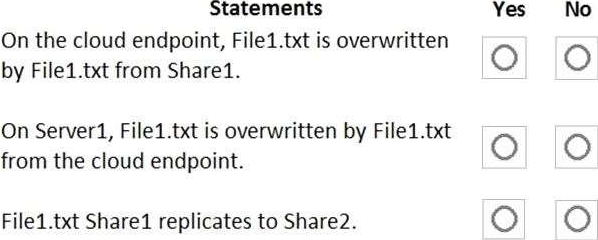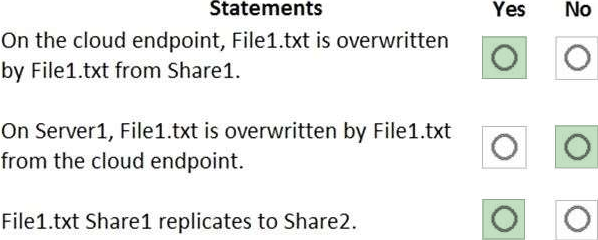HOTSPOT
You have a sync group named Sync1 that has a cloud endpoint. The cloud endpoint includes a file named File1.txt.
You on-premises network contains servers that run Windows Server 2016.
The servers are configured as shown in the following table.

You add Share1 as an endpoint for Sync1. One hour later, you add Share2 as an endpoint for Sync1.
For each of the following statements, select Yes if the statement is true. Otherwise, select No. NOTE: Each correct selection is worth one point.

Answer: 
Explanation:
Statement 1: Yes
If you add an Azure file share that has an existing set of files as a cloud endpoint to a sync
group, the existing files are merged with any other files that are already on other endpoints
in the sync group.
Statement 2: No
Files present in any server endpoint will not be overwritten by the files present in cloud endpoint. Hence this statement is false.
If you add a server location with an existing set of files as a server endpoint to a sync
group, those files will be merged with any other files already on other endpoints in the sync
group but not vice versa.
Statement 3: Yes
Azure File Sync has a simple architecture: cloud endpoints, which is the Azure File Sync service and server endpoints, which are the registered servers with the service. On top of that, we have Sync Groups, which combine one cloud endpoint with one or more server endpoints. All members of this group will receive the replicated data where the central location will be the cloud endpoint.
References:
https://docs.microsoft.com/en-us/azure/storage/files/storage-sync-files-planning
http://techgenix.com/azure-file-sync-replicating-data/

Leave a Reply